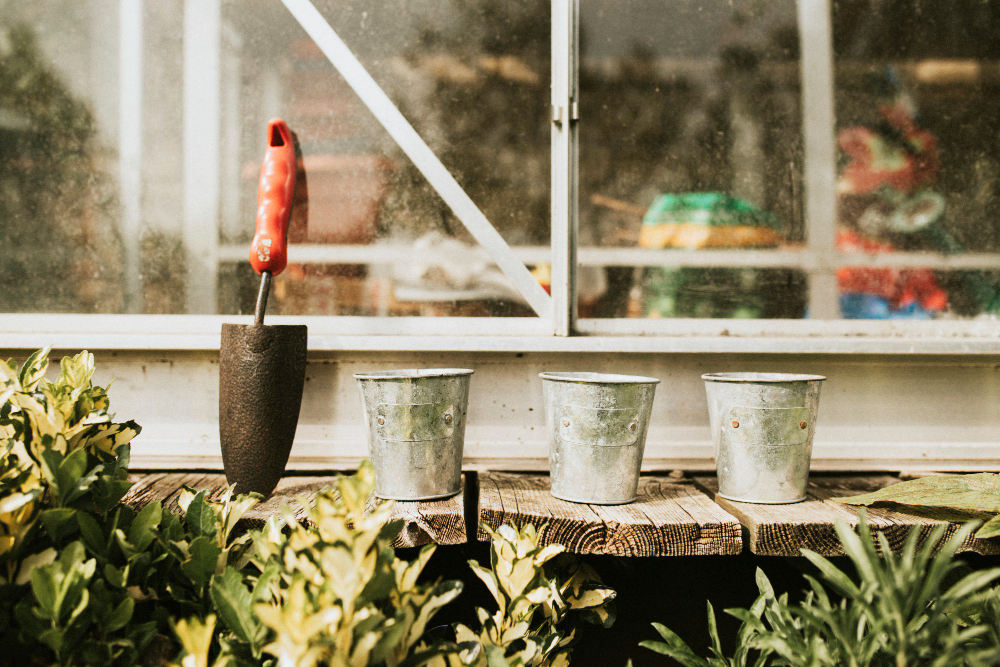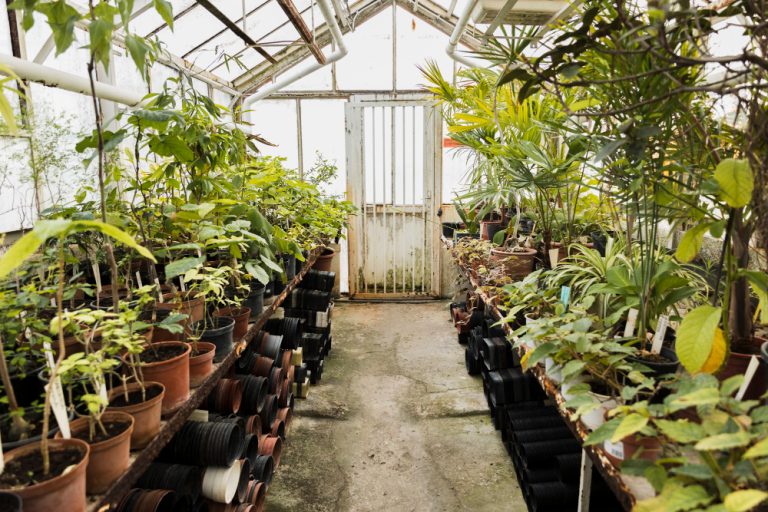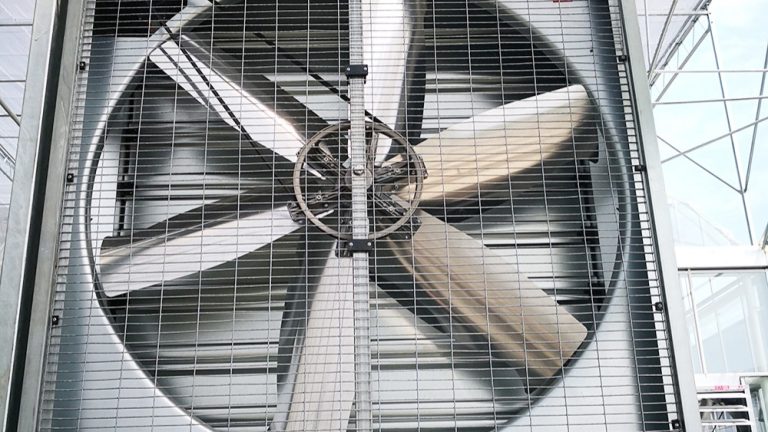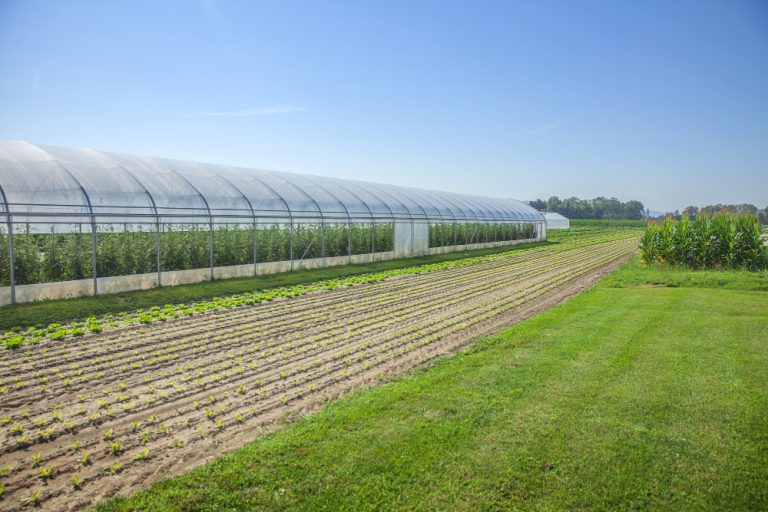
Key Points
Research suggests mini greenhouses are great for growing tomatoes,offering controlled conditions.
It seems likely that starting seeds indoors and transplanting to the greenhouse works well.
The evidence leans toward maintaining warm temperatures and good ventilation for healthy growth.
Setup and Location
Place your mini greenhouse in a sunny,sheltered spot to maximize light exposure,ideally 6-8 hours daily.Ensure it’s well-ventilated to control humidity and prevent mold.
Planting and Care
Start tomato seeds indoors 6-8 weeks before the last frost,using quality compost.Transplant seedlings into large containers(at least 19 liters)in the greenhouse,supporting them with stakes or cages.Keep soil moist,fertilize every 10-14 days,and hand-pollinate if needed.
Maintenance
Maintain daytime temperatures of 21-27°C and nighttime around 16-18°C.Watch for pests like aphids and diseases like blossom end rot,addressing issues promptly for a successful harvest.
Detailed Survey Note on Growing Tomatoes in a Mini Greenhouse
Growing tomatoes in a mini greenhouse is a practical and rewarding endeavor,especially for gardeners with limited space or those looking to extend their growing season.This detailed survey note explores the process,drawing from various reliable sources to provide a comprehensive guide.It covers setup,variety selection,planting,care,and maintenance,ensuring you have all the information needed for a successful tomato harvest.
Introduction to Mini Greenhouses and Tomatoes
Tomatoes(Solanum lycopersicum)are one of the most popular crops for greenhouse cultivation,known for their versatility and nutritional value.Mini greenhouses,often affordable structures costing around£20,are ideal for those without access to larger greenhouses.They can be placed in sunny,sheltered spots and are particularly useful for early-season protection and extending the growing period,especially in cooler climates.For instance,a mini greenhouse can maintain temperatures around 45-50°F at night when external temperatures dip into the high 30s,as noted in discussions on winter growing.
The benefits of growing tomatoes in a mini greenhouse include earlier and larger crops compared to outdoor growing,protection from frost,and the ability to control environmental conditions.However,challenges such as maintaining optimal temperature,humidity,and light,especially in winter,require careful management.This note will guide you through each step,ensuring you can navigate these challenges effectively.
Setting Up Your Mini Greenhouse
The first step is to choose an appropriate location for your mini greenhouse.It should be in a sunny area,receiving at least 6-8 hours of sunlight daily,as tomatoes thrive in bright conditions.A sheltered spot,protected from strong winds,is crucial to prevent damage to the structure,which typically has a lifespan of 3-5 years with careful winter storage.Ventilation is essential to maintain humidity below 90%,preventing excessive leaf mold,and should be managed by opening vents,especially on cool,cloudy mornings.
Temperature control is vital,with research suggesting tomatoes grow best at daytime temperatures of 70-80°F(21-27°C)and nighttime temperatures of 60-65°F(16-18°C).For winter growing,supplemental lighting like LED grow lights may be necessary to provide 16-hour days,particularly in regions with limited natural light.Ensure the greenhouse is clean and free from pests or diseases before introducing plants,as tomatoes are prone to issues like whitefly,which can be minimized by companion planting with herbs like basil and lavender.
Selecting Tomato Varieties
Choosing the right tomato variety is crucial for success in a mini greenhouse.Indeterminate(vining)varieties,such as’Cappricia’,’Gardener’s Delight’,’Sungold’,’Sweet Million’,and’Bull’s Heart’,are well-suited for greenhouse conditions,offering longer growing seasons and higher yields.These varieties benefit from staking or trellising due to their tall growth,which can reach the roof in a mini greenhouse,potentially requiring dwarfing or pinching out shoots at desired heights.
Determinate(bush)varieties may be better for limited space but typically produce a single,shorter harvest.When selecting seeds,look for those labeled as’greenhouse varieties’and marked with VFNT for resistance to common diseases like verticillium wilt,fusarium wilt,nematodes,and tobacco mosaic virus.Starting with 2-3 varieties can simplify management,especially for beginners.
Starting Seeds and Transplanting
Begin by sowing tomato seeds indoors 6-8 weeks before the last frost date,typically around early to mid-March in many regions,given the current date is May 19,2025.Use seed trays filled with compost,planting seeds about¼inch(6 mm)deep,and cover with just under 1 cm of compost.Keep the trays warm(around 75-80°F or 24-27°C)but out of direct sunlight until germination,which takes 5-12 days.Maintain damp conditions,being careful not to over-water,as this can lead to mold diseases.
Once seedlings appear,move them to a bright,warm location.After 2 weeks,transplant to small pots,and after 6-8 weeks or when 4-6 inches tall,move to larger pots or growing bags in the greenhouse,ensuring each plant has about 4 square feet(0.37 m²)of space.Handle seedlings by the leaves to avoid stem damage,and plant deeply,burying up to the first set of leaves to encourage root development along the stem.
Planting and Growing Conditions
For planting,use large containers(at least 19 liters for indeterminate varieties)with drainage holes to prevent waterlogging,or consider planting beds if space allows,which hold more water and dry out more slowly.Replenish soil annually to avoid nutrient deficiencies and disease build-up.The soil pH should be between 5.8-6.8;if too acidic,add 1 tsp(5 mL)hydrated lime per gallon(3.8 L)of soil,or use gypsum for calcium without altering pH.
Water regularly to keep the soil evenly moist,checking for curling leaves as a sign of water shortage,especially in hot weather when containers may need daily watering.Fluctuating moisture levels can cause fruit splitting or blossom end rot,a condition caused by calcium deficiency,which can be addressed by adding bone meal or calcium nitrate to the soil.
Supporting and Training Plants
Tomatoes,particularly indeterminate varieties,grow tall and require support.Use stakes,cages,or trellises,tying the main stem weekly as it grows about 6 inches per week.For home gardens,tomato cages are practical,while commercial setups might use overhead wires every 20 feet.Pinch off suckers(side shoots where the leaf meets the stem)weekly to focus energy on fruit production,leaving the main bud and the highest sucker below it.
Pollination and Pruning
In a mini greenhouse,natural pollinators like bees may be absent,so hand-pollination is often necessary.Pollinate every other day between 10 am and 2 pm when flowers are fully open,using an electric plant vibrator,fans for airflow,or a cotton swab to transfer pollen.Prune after fruiting by thinning clusters to 4-5 fruits(3 for large fruits or winter growing),removing the smallest or misshapen,and snapping off lower leaves for better air circulation as fruit matures.
Pest and Disease Management
Tomatoes are susceptible to pests like aphids,whiteflies,and spider mites,which can be spotted clustered on stems or leaves.Use organic methods like insecticidal soap or diatomaceous earth to control them.Diseases such as blight,wilt,and blossom end rot require vigilance;ensure proper watering,add calcium if needed,and prune dead or dying leaves to improve airflow and sunlight exposure.
Harvesting and Companion Planting
Harvest tomatoes when 60-90%red for commercial shipping or let them ripen fully on the vine for home use,ensuring the sweetest,juiciest flavor.Companion planting can enhance growth by deterring pests;consider planting basil,chives,nasturtium,or even chillies,peppers,or cucumbers in front of tomatoes to utilize lower light levels.
Winter Growing Considerations
For winter growing,maintaining temperatures above 45°F at night may require additional heating,and supplemental lighting with T5 or LED grow lights can provide necessary light,especially for cherry tomatoes or varieties suited to colder climates like those grown in Alaska or Russia.Expectation should be managed,as success may depend on experimenting with conditions and supplemental heat/light.
Summary Table of Key Practices
| Aspect | Recommendation |
|---|---|
| Location | Sunny, sheltered spot, 6-8 hours sunlight daily |
| Variety Selection | Indeterminate varieties like ‘Sungold’, disease-resistant (VFNT) |
| Seed Starting | Indoors 6-8 weeks before last frost, warm (21-27°C), damp compost |
| Transplanting | To large pots (19L+), space 4 sq ft per plant, deep planting |
| Temperature | Day 21-27°C, night 16-18°C, ventilate to control humidity |
| Watering | Keep soil moist, daily in hot weather, avoid leaf wetting |
| Fertilizing | Balanced tomato feed every 10-14 days, reduce as fruits ripen |
| Support | Stakes, cages, or trellises, tie weekly, pinch suckers |
| Pollination | Hand-pollinate if needed, 10am-2pm, use vibrator or swab |
| Pest/Disease | Monitor for aphids, whiteflies; address blossom end rot with calcium |
| Harvest | Pick when 60-90% red or fully ripe on vine |
| Companion Planting | Basil, chives, chillies, peppers to deter pests |
This table summarizes key practices,ensuring you have a quick reference for each stage of growth.For further details,refer to the cited sources,which provide extensive guidance on each aspect.
Conclusion
Growing tomatoes in a mini greenhouse is feasible with proper planning and care,offering the advantage of controlled conditions and extended seasons.By following the steps outlined—setting up in a sunny,ventilated spot,selecting appropriate varieties,starting seeds early,and maintaining optimal conditions—you can enjoy a bountiful harvest.Remember to monitor for pests and diseases,and consider companion planting for added benefits.For winter growing,additional heating and lighting may be necessary,but with experimentation,success is achievable.




